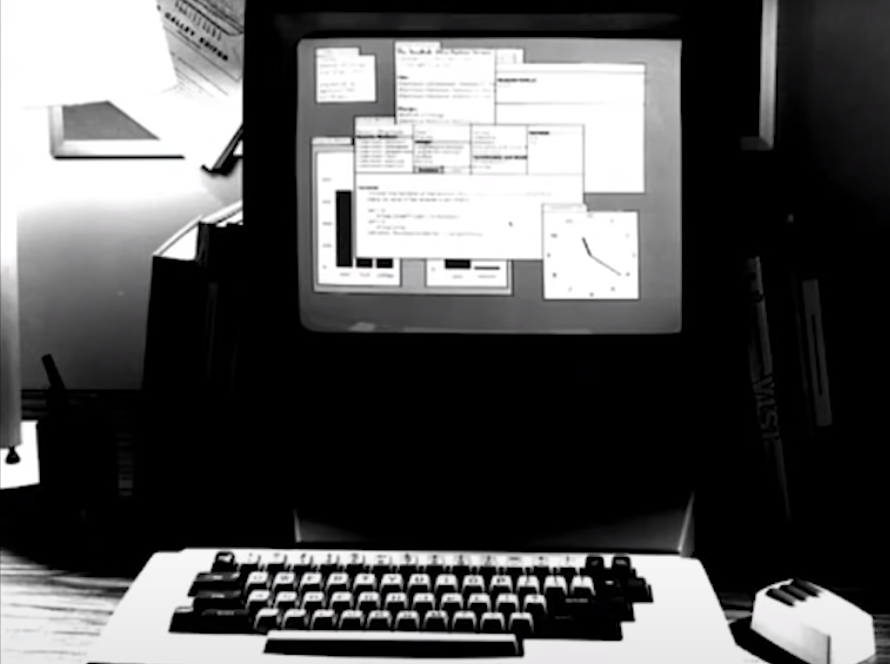I listened to a talk today that reminded me of a valuable piece of wisdom I heard years ago, which I thought was worth pondering and sharing.
The talk told the story of Bill Atkinson, who was a designer and developer at Apple throughout the 1980’s. He was responsible for an innovation that has made its way to billions of computers around the world.
A quick summary of that story:
Bill Atkinson was working at Apple, developing the Graphical User Interface which would eventually make its way onto Apple’s Macintosh computers. One day, he ended up getting a tour of a place call Xerox PARC, which was a major center of some of the most important innovations in the early computing world. If you’ve ever used a computer mouse, a laser printer, or even just a personal computer like a laptop/desktop, Xerox PARC was largely responsible for the innovations that made that possible.
While Atkinson was at Xerox PARC, he saw something revolutionary. He saw a demo of a computer with multiple programs running together as different overlapping windows.

This was a game-changing feature. At the time, all programs were either text based, needing to be run on complicated command-line interfaces that made them inaccessible for non-technical people, or they needed to be run full-screen, one program at a time. The idea that you could have multiple programs running at once, on one screen, and that you could have those programs overlapping on the screen like pieces of paper on a desktop… well, that just didn’t exists!
But yet, here it was!
Later, back at Apple, Bill ended up being commissioned to create a similar feature for the Macintosh. He got to work, and went on a programming blitz to implement that same idea from Xerox onto Apple’s products.
There were a number of complex, unsolved problems that Bill needed to figure out to make it happen. For a feature that we take for granted today, the idea of getting windows to layer naturally is actually quite complicated. But, Bill had seen the feature on computers at Xerox, so he knew that those problems could be solved.
He had seen it. So he knew it could be done.
After a crazy blitz of legendary coding prowess, Bill Atkinson figured it out. He got working code that allowed programs to run as overlapping windows. It was such a hit feature that it quickly got copied and spread to what eventually became every desktop computer operating system in the world. MacOS, Windows, desktop Linux, and many more all ended up implementing this feature, which Bill Atkinson actually copied from Xerox.
Except, for the twist:
Xerox hadn’t actually developed a windowing system like Bill Atkinson thought he saw!
Xerox didn’t have anything like that, at all!
Bill Atkinson only thought he had seen a computer with a feature like that, but he didn’t.
The feature he had seen didn’t actually exist…
… until he created it.
While listening to this story, I couldn’t help but call to mind something a friend told me years ago. I had just explained some big ideas and dreams I wanted to pursue, but was overwhelmed by the scale and apparent impossibility of the idea.
She told me, “When it comes to things that seem big and impossible, my motto is: ‘If you can see it, it’s legal.’”
For any seemingly-impossible dream that has actually come to pass (airplanes, space-travel, instant cross-global communication, eradication of smallpox, et al.), it had to start with vision.
It had to start with someone seeing it.
Obviously, simply “seeing” it didn’t make those dream happen. Each of those took insane amounts of creatively, tenacity, problem-solving, leadership, and perseverance to bring to the world.
But, those changes couldn’t happen until someone had vision for the idea. That picture of how the world would look different afterwards opened the door to those changes being made manifest.
Seeing it made it legal.
](https://joshmuller.ca/img/2023/if-you-can-see-it-its-legal.jpg)